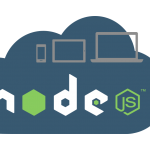SQL Server sessions are a way to establish a connection between a client and a database. A session is created when a client logs in to a database and remains active until the client logs out or the session is terminated for some other reason.
During a session, a client can execute SQL commands and retrieve data from the database. The session also allows the database to track the client’s activity, such as the commands they execute and their changes to the data.
You can create a session on SQL Server by connecting to a database using a client program or tool. The specific steps to create a session may vary depending on your client’s program or tool. Once a session is created, you can execute SQL commands using that session. For example, you can select data from tables, insert data into tables, update data in tables, and delete data from tables.
It’s important to note that sessions consume resources on the database server, such as memory and processing power. Therefore, it’s good practice to terminate sessions when they are no longer needed to free up resources for other clients.
How to terminate a session on SQL Server?
To terminate a session, you can use the KILL command followed by the session ID.
It’s important to use caution when terminating sessions, as doing so can result in data loss or corruption if the client is in the middle of a transaction.
If unsure whether it’s safe to terminate a session, consult a database administrator or other qualified technical expert.
How to return current session details in SQL?
To return the current session details in SQL, you can use the following command:
This will return a result set containing information about the current session, including session ID, user ID, login time, current database, and other details. The sys.dm_exec_sessions system view obtains information about active user connections and sessions in SQL Server. The @@SPID system function returns the session ID of the current user connection.
What is SESSION_USER on SQL Server?
The SESSION_USER is a built-in function in SQL Server that returns the current user’s name for the current session. This function is used to retrieve the name of the user who is currently logged in to the SQL Server instance and execute the current statement or batch.
The syntax for using SESSION_USER is as follows:
The result of this statement will be the name of the current user. The SESSION_USER function is particularly useful for security purposes, as it enables you to check the user’s identity running a particular query or procedure.
Note that SESSION_USER is similar to the USER function in SQL Server, but the difference is that USER returns the name of the user who owns the current database, while SESSION_USER returns the name of the user for the current session.
How to get all active sessions in SQL Server?
To get all active sessions in SQL Server, you can use the following query:
This will return a result set containing information about all currently active user sessions in the SQL Server instance, including session ID, user ID, login time, current database, and other details. The sys.dm_exec_sessions system view obtains information about active user connections and sessions in SQL Server.
The is_user_process = 1 condition filters out system sessions and other non-user processes, so you only see the active user sessions. If you want to filter the results further, you can add additional conditions to the WHERE clause, such as filtering by username, hostname, or database name.
You will need appropriate permissions to access the sys.dm_exec_sessions view, such as the VIEW SERVER STATE permission.






